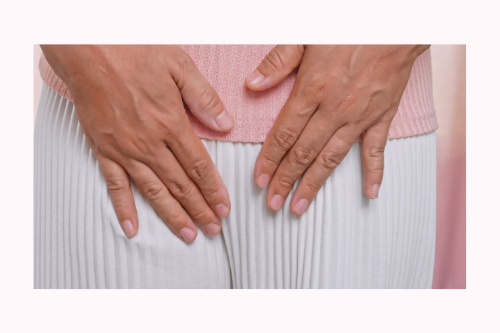Vaginal Microbiome & 3 Things You Might Be Doing to Harm It
The Vaginal Microbiome & 3 Things You Might Doing to Harm It
We, as humans, are full of bacteria! That may sound scary, but it’s actually a good thing because most of those bacteria are helpful to the body. Our body benefits from the hard work of helpful bacteria in maintaining healthy environments in our gut, on our skin, in our noses, mouths, urethra and even in the vagina 1,2.
An “unhealthy” vaginal microbiome is associated with heightened risk for things like Bacterial Vaginosis Chlamydia, HPV and cervical cancer, and even HIV 1. However, not every vaginal microbiome is alike. It changes based on several factors including things like diet, hygiene, ethnicity, geographic region, and genetic makeup 1,2,3. Importantly, it also changes based on life stage, with distinct traits during puberty, pregnancy, and menopause 1,2.
-
Before puberty and the onset of menses, the vaginal environment is more diverse (has more types of bacteria), and has a pH that is neutral to slightly basic 1,2.
-
As hormone levels of estrogen rise, the bacterial diversity drops, favouring one type of bacteria called Lactobacilli, and the environment becomes more acidic 1,2.
-
During the menstrual cycle, fluctuations in estrogen cause not only a shed of the uterine lining (aka a period), but also a fluctuation in the vaginal bacteria and pH 1. During menses, blood neutralizes the normally acidic environment and there are less lactobacilli bacteria present 2. As the period ends, the acidity is restored and so is the usual presence of Lactobacilli in the microbiome 2.
-
If a pregnancy occurs, the vaginal ecosystem shifts to be even more dominant in the Lactobacilli bacteria due to increased hormone levels from the developing placenta 3. This increase makes the vagina able to fend off unwanted bacteria by creating a hostile environment marked by acidity 3. In the postpartum period, the dominance of this type of bacteria falls and the environment becomes less acidic and returns to pre-pregnancy levels and composition 3.
-
When menopause occurs, a stage where estrogen levels fall and the experience of getting a period/ menstruating stop, the Lactobacilli bacteria percentage also drops 1.
Now that we’ve covered the basics on the vaginal microbiome, it’s time to see what things you may be doing to unknowingly disrupt this important ecosystem.
3 Things you may be doing to harm your vaginal microbiome:
1. Certain sexual activities
Having sex with multiple or new partners, the use of sex toys that may carry bacteria, and receiving oral sex have all been linked to increase risk for disruption to the healthy vaginal microbiome 1. To protect your healthy vaginal environment, it is advised to practice safe sex, get tested regularly for STIs, and use clean sex toys.
2. Using certain types of birth control
The type of birth control that you use has an impact on your vaginal environment. Studies have shown that IUDs may contribute to dysbiosis in the vagina, specifically with the copper IUD 4. If you have noticed changes in discharge, smell, or irritation in your vaginal area you should consult your healthcare practitioner.
3. Using hygiene products
Napkins, douches, moisturizer or lube, and washes can disturb a healthy pH and can cause a pro-inflammatory response in the vagina 1. The experts say that washing the external genitalia with warm water is enough to keep it clean!
All in all, the vagina is home to an incredible ecosystem of healthy bacteria that protect it and change over the lifespan. A healthy vaginal microbiome reduces risk of infection and disease. If you suffer from Bacterial Vaginosis and want to learn more about an all-natural method of treatment, check out our other blog post called “The Wonders of Boric Acid and the Vagina”, and our brand-new product, Up & Away – an intravaginal boric acid supplement kit complete with applicator and feminine pH testing strips.
Sources
(1) Deka, N., Hassan, S., Kiran, G.S., and Selvin, J. (2021). “Insights into the role of vaginal microbiomes in women’s health”. Journal of Basic Microbiology, 61. 12. P1071-1084.
(2) Kaur, Merchant, M., Haque, M. M., & Mande, S. S. (2020). Crosstalk Between Female Gonadal Hormones and Vaginal Microbiota Across Various Phases of Women’s Gynecological Lifecycle. Frontiers in Microbiology, 11, 551–551.
(3) MacIntyre, D., Chandiramani, M., Lee, Y. et al. The vaginal microbiome during pregnancy and the postpartum period in a European population. Sci Rep 5, 8988 (2015). https://doi.org/10.1038/
(4) Achilles SL, Austin MN, Meyn LA, Mhlanga F, Chirenje ZM, Hillier SL. Impact of contraceptive initiation on vaginal microbiota. Am J Obstet Gynecol. 2018;218:622.e1–e10.


